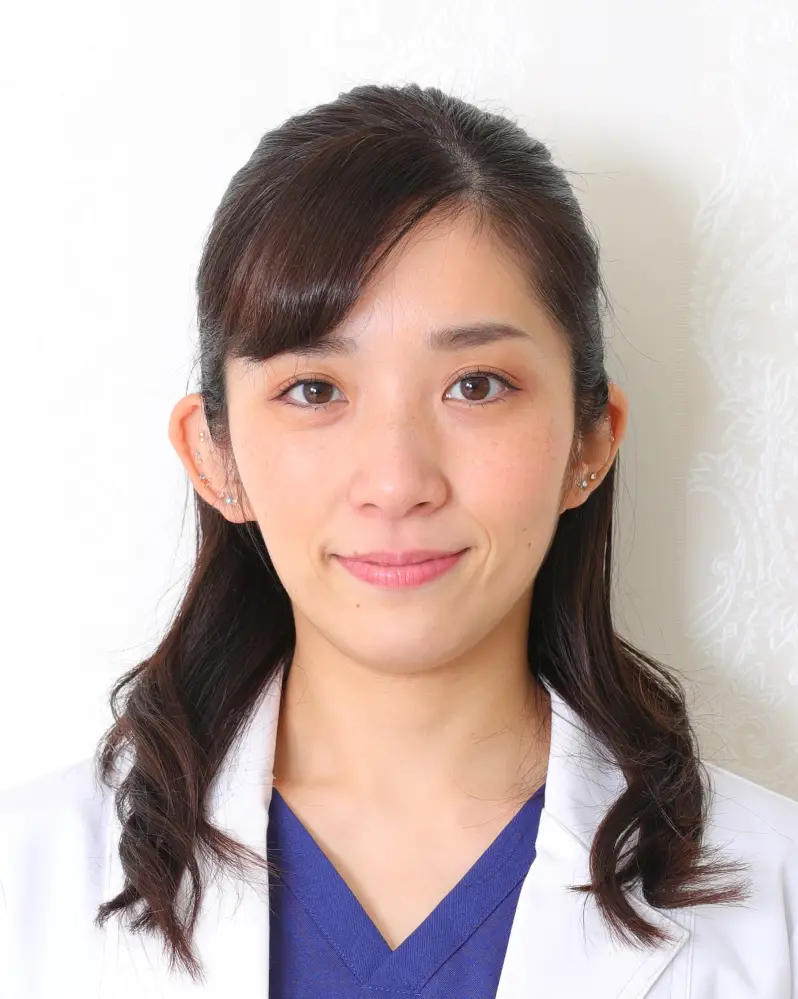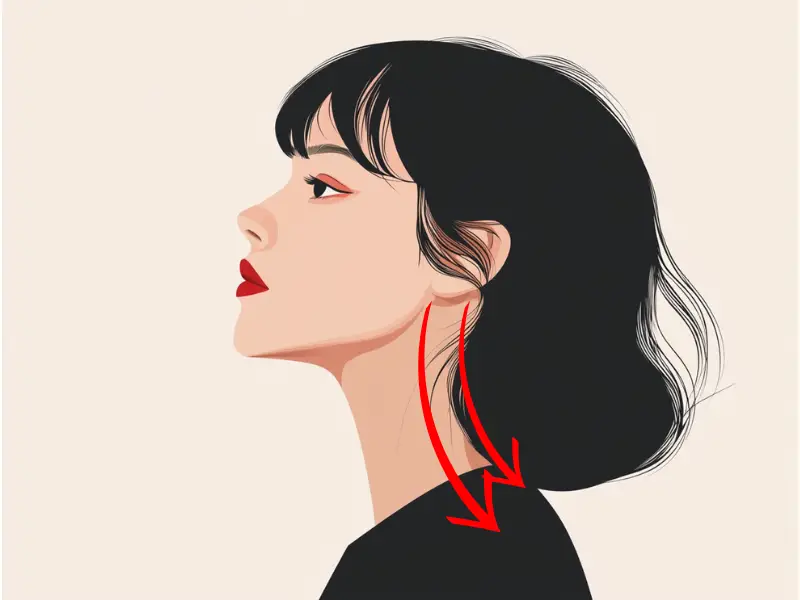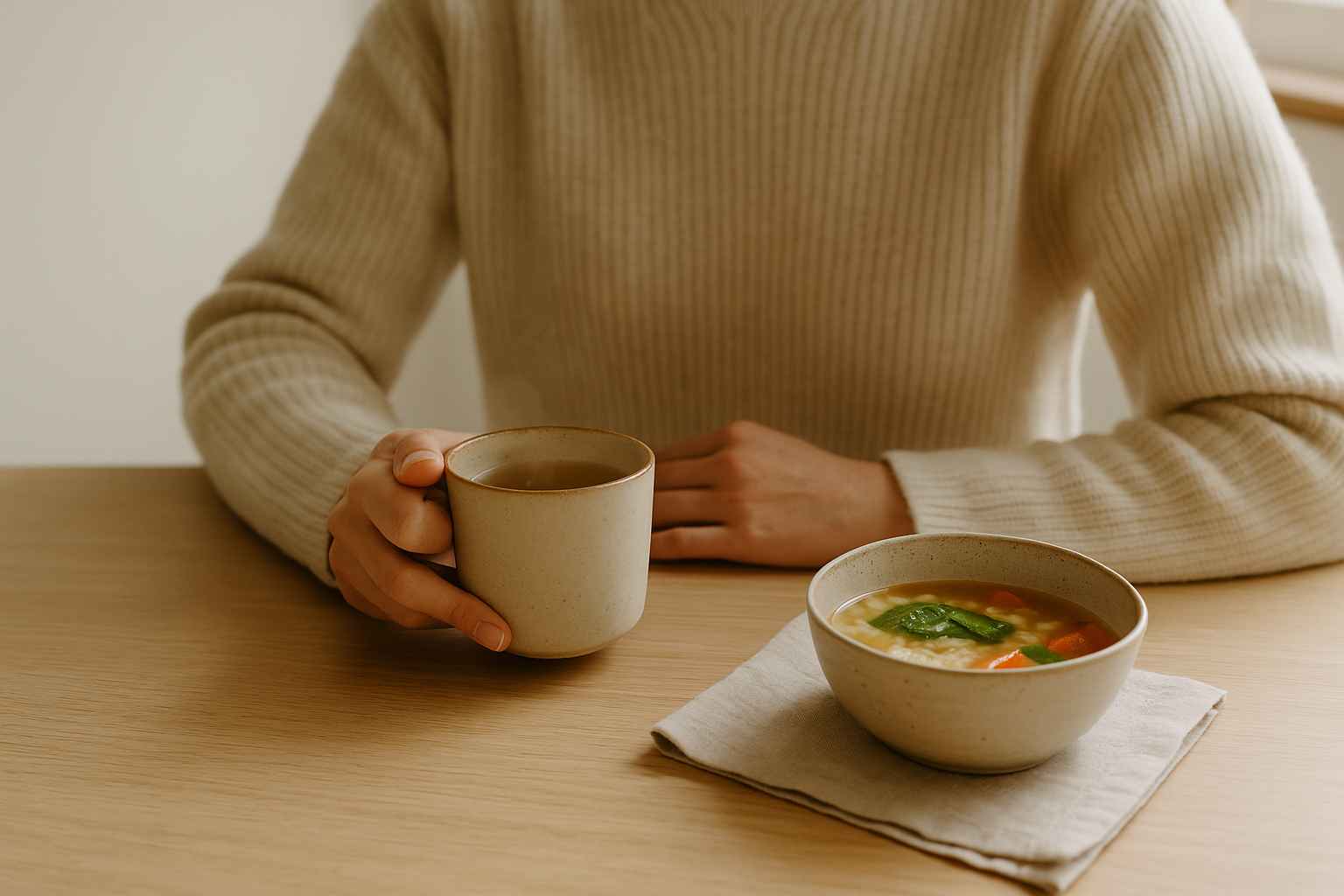How to Sculpt Your Dream Jawline Using Gua Sha Techniques
If you’re looking for natural ways to enhance your jawline, gua sha for jawline sculpting can be a gentle yet effective option. Gua sha, an ancient Traditional Chinese Medicine (TCM) practice, involves using a smooth stone to stimulate blood flow, release muscle tension, and improve lymphatic drainage, creating a defined and toned look. We consulted Ms. Mai Sogawa, a certified TCM therapist, who shared her top gua sha techniques for achieving a sharper jawline—even while relaxing in front of the TV. For additional background on gua sha, explore our comprehensive guide to get started with this powerful tool.
In this article, we’ll cover the specific strokes and methods you can use to enhance your jawline with gua sha, including tips on frequency and pressure for optimal results.
Benefits of Gua Sha for Jawline Sculpting
Using gua sha on the jawline offers a range of benefits, including:
- Improved Circulation: Gentle scraping boosts blood flow, bringing essential nutrients to skin cells for a natural glow.
- Lymphatic Drainage: This technique helps to reduce puffiness and excess fluid around the jawline, making the face appear more contoured.
- Muscle Relaxation: Regular gua sha sessions can relieve tension in the jaw muscles, which can soften a bulky or tense appearance.
- Enhanced Skin Tone: Gua sha helps stimulate collagen production and supports skin elasticity, providing a smoother, more youthful look.
“For beginners or those with sensitive skin, a jade roller is a gentler option and can be used without oil over makeup. However, for deeper muscle relaxation and sharper contouring, gua sha is ideal.” — Ms. Mai Sogawa, TCM Therapist
Essential Gua Sha Moves to Sculpt the Jawline
To create a defined jawline, Ms. Sogawa recommends focusing on strokes that support natural contouring and relaxation of the facial muscles. Here are some of the most effective moves you can try at home:
1. Chin-to-Ear Jawline Glide
One of the fundamental moves for jawline definition is the chin-to-ear glide. Here’s how to do it effectively:
- Technique: Begin by placing the gua sha tool at the center of your chin. Gently glide the tool along the jawline, moving from the chin toward the base of the ear. Perform this stroke on each side of the face.
- Repetitions: Aim for about five strokes on each side, making sure to move in one direction without dragging the skin back and forth.
- Benefits: This move sculpts the jawline by encouraging lymphatic drainage and increasing blood circulation, helping to accentuate a more chiseled appearance.

2. Neck Drainage for Reduced Puffiness
Gua sha is also effective for lymphatic drainage in the neck area, which can enhance your jawline definition by reducing puffiness and excess fluid.
- Technique: Position the tool just below the earlobe at the base of the jaw, and glide it down along the side of your neck toward the shoulder. Repeat on both sides, moving in one direction.
- Repetitions: Perform about five downward strokes on each side of the neck.
- Benefits: This motion promotes fluid drainage, enhancing contour in the jawline and giving a more lifted appearance.
3. Masseter Muscle Pressure Release for Softened Jawline
If you’re concerned about a pronounced jaw or tension from teeth clenching, releasing the masseter muscle (the main jaw muscle) with gua sha can create a smoother, more relaxed look.
- Technique: Find the masseter muscle by clenching your back teeth; it’s located just in front of your ears. Gently press the gua sha tool against the muscle and apply steady pressure, rocking the tool back and forth in small movements.
- Repetitions: Hold and rock the tool for about 10–15 seconds on each side.
- Benefits: This technique releases tension in the jaw, reducing any tightness or bulkiness that can make the face appear wider.
Tips for Enhancing Your Gua Sha Routine
To make the most of gua sha for jawline sculpting, consider these additional tips:
- Use Facial Oil: Applying a facial oil beforehand allows the tool to glide smoothly over the skin, preventing tugging and minimizing friction.
- Stay Consistent: Consistency is key with gua sha. Practicing two to three times per week is ideal for gradual, long-lasting results.
- Apply Light to Moderate Pressure: Start with gentle pressure, increasing slightly if needed, but avoid pressing too hard, especially around the delicate jawline area.
- Watch Your Angles: Hold the tool at a 15-degree angle (almost flat) against your skin to achieve the best results with minimal irritation.
- Follow Your Natural Contours: Let your bone structure guide your strokes. Moving along the natural contours of your face ensures a more lifted, sculpted effect.
How Often Should You Use Gua Sha for Jawline Sculpting?
To see visible results, Ms. Sogawa recommends practicing gua sha on the jawline two to three times a week. With regular use, many people notice enhanced definition within a month. If you’re just starting out, you can begin with shorter sessions, about 5–10 minutes, gradually increasing as you become comfortable with the technique. Just remember, consistency is more important than intensity for long-term improvement.
Choosing the Right Gua Sha Tool for Jawline Sculpting
Not all gua sha tools are the same, and choosing one that fits comfortably in your hand is essential for ease and effectiveness. Consider these options:
- Jade: Known for its cooling properties, jade is excellent for reducing puffiness and soothing the skin.
- Rose Quartz: This is often chosen for its ability to stay cooler for longer, which is beneficial for inflammation and sensitive skin.
- Bian Stone: Traditionally used in TCM, bian stone tools are slightly heavier, making them suitable for deeper muscle work and jaw sculpting.
When choosing a gua sha tool for jawline sculpting, pick one with a curved edge that comfortably fits the contours of your jawline for smooth, precise strokes.
“Using cooled gua sha stones as a finishing touch tightens pores and refreshes the skin. However, following up with a warm massage afterward is more effective for reducing puffiness.” — Ms. Mai Sogawa, TCM Therapist
Common Mistakes to Avoid with Gua Sha for the Jawline
To ensure you get the best results from your gua sha practice, keep these common mistakes in mind:
- Using Too Much Pressure: Pressing too hard can lead to skin irritation or bruising. Always use light to moderate pressure.
- Skipping Lubrication: A dry tool can drag on the skin and cause discomfort. Apply a facial oil to help the tool glide.
- Neglecting the Neck Area: Since lymphatic drainage is key to jawline sculpting, don’t forget to include the neck in your routine.
- Inconsistency: Sporadic gua sha use may not yield the desired definition. Try to build a regular habit for best results.
Final Thoughts on Gua Sha for Jawline Sculpting
Gua sha is a powerful, natural technique that can help you achieve a sculpted jawline by enhancing circulation, encouraging lymphatic drainage, and relaxing tight muscles. By incorporating Ms. Sogawa’s expert-recommended moves, you can effectively use gua sha for jawline sculpting at home, transforming your daily relaxation time into an opportunity for self-care and facial rejuvenation. Remember to use gentle pressure, choose a suitable tool, and stay consistent with your routine for best results.

Try our Anti-Aging Gua Sha Tool designed to bring out your skin’s natural glow.
Best Gua Sha Product- Anti-Aging: The tool is designed to target 11 specific aging signs such as wrinkles and sagging skin. By following the 7-step routine, users can improve skin firmness and reduce fine lines naturally.
- Enhances Skincare Routine: It works effectively with serums and lotions, boosting absorption and efficacy of skincare products.
- Visible Skin Improvement: Users can expect a smoother complexion, reduced puffiness, and a more youthful appearance.
 P. Sze
P. Sze 




















